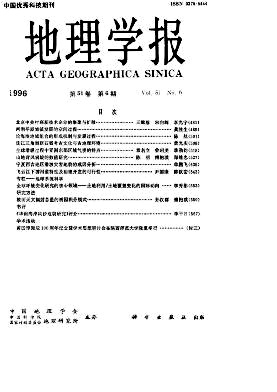Shuai JiangPing
City is an unequilibrium system in continuous evolution with the characteristics of self-organiza-tion.This article builds up an urban self-organization model under the balance between supply anddemand.This model is theoretically based on feedback in system,spatial interaction among regionsand stochastic fluctuation.According to Christellar’s market system and the Chinese real conditions,five important coefficients(γ(k),ρ(k),φ(k),m,b) are calculated.In modelling the evolutionprocess,the author builds up an 8×8 urban market system,and the initial condition for each market is the same.The modelling result shows that an evenly-distributed spatial structure will not appear although the initial spstial structure and population distribution are even.Further analysis points out that:(1)The main urban centers appear in the central region of acity,and city tends to form more than one centers with the same scale and the same function, whichis different from Christellar’s model.The centers do not allocate in the geometric center of the city.This kind of spatial structure supports to form multiple-center market system in a city.(2)Theevolution process of a city can be divided into three stages.In the first stage,the city changes at alow speed since the feedback is not strong.In the second stage,the strong feedback stimulates thecity to evolute fast.In the last stage,the agglomerating process and spread process become balanced,the evolution of city reaches a dynamic equilibrium.(3) In the self-organization model,thelowest land price locates in the break-point of two main centers.But in Christellar’s model,it willlocate in the closest maket of the center.The author thinks that the Central Place theory and its modification only explains a part of thedynamics in the formation and evolution of urban spatial structure.The self-organization model includes three main processes and dynamics,it can explain more characteristics of urban spatial struc-ture.Uneven distribution of urban spatial structure is the main form in reality because of spatial interaction.
